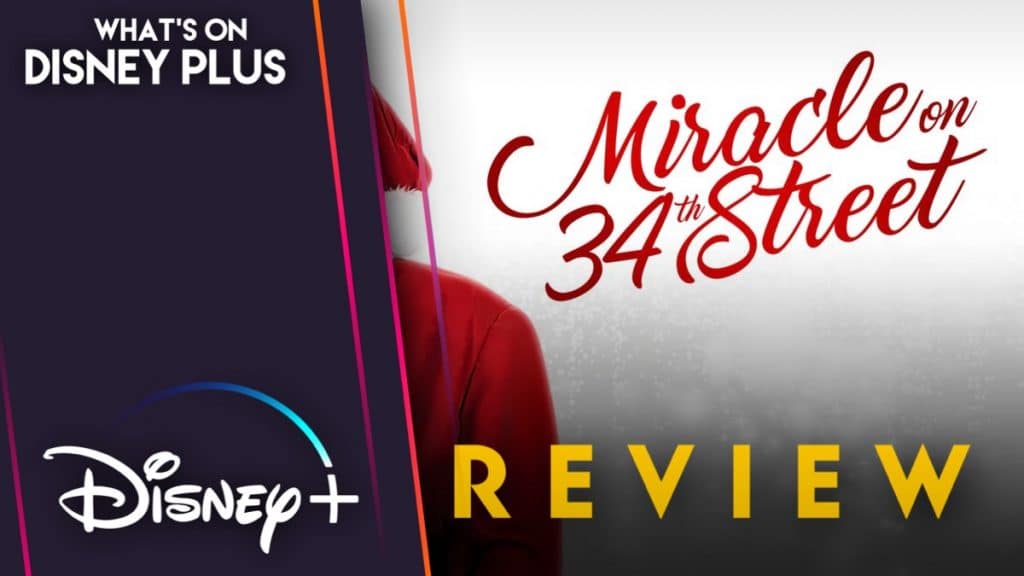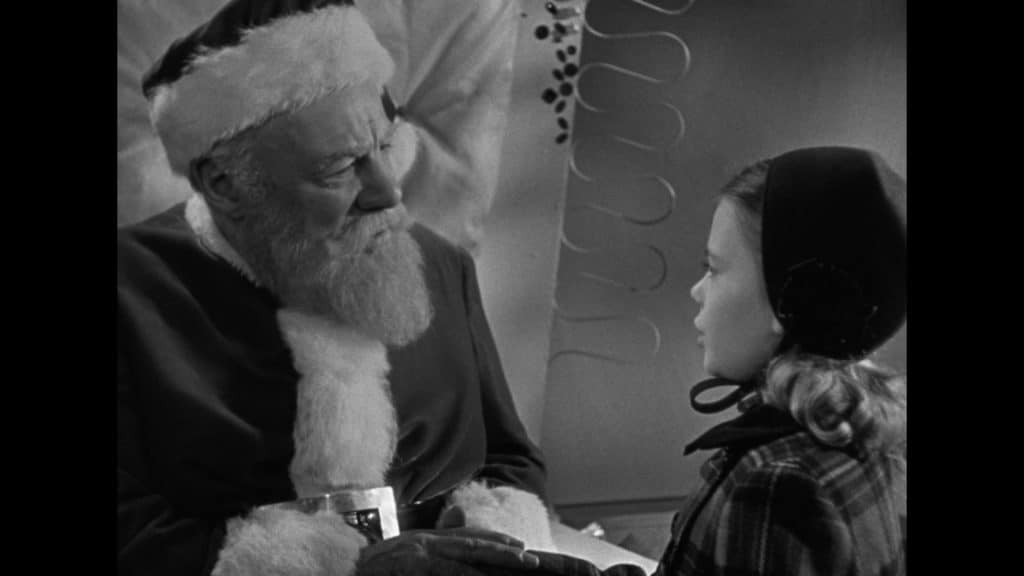
Miracle on 34th Street (1947) | Retro Movie Review
Susan Walker (Natalie Wood) is a very intelligent, sensible little girl who has been brought up by her mother Doris (Maureen O’Hara) to not believe silly fairy stories or get lost in her imagination. And that includes not believing in Santa Claus. But when her mother needs a last minute replacement Santa for the Macy’s Thanksgiving parade, the kindly old man who steps into the role (Edmund Qwenn) turns the world of this mother and daughter tandem upside down by adamantly insisting that he really is Kris Kringle himself. Even when the rest of the world is ready to lock him up as a madman…
Besides perhaps a Christmas Story, A Christmas Carol and It’s A Wonderful Life, there are very few classic festive tales that embody the Christmas spirit like the original 1947 Miracle on 34th Street. Admittedly, I’ll own up to the fact that I watched the film in full for the very first time to write this review. But the amazing thing is that I already knew most of the story beats because the film has seeped into the larger pop culture over the last 75 years through parody and tribute. So the question remains, after all those parodies, tributes and three-quarters of a century is the film really as good as the reputation that precedes it? Well, yes, though it is rather old-fashioned and a little oddly paced at times. Let me explain.
No, the irony isn’t lost on me when I call a very old film “old-fashioned”. I know that’s a bit of a “well, duh!” statement. But still, I stand by my phrasing. You see, this film is at least relatively progressive for its time. Or at least wants to be, because Doris Walker is quite explicitly a single mother. Although this isn’t so explicitly stated, the undertones of Doris wanting to protect her daughter Susan from “dishonesty and make believe” at least strongly implies that infidelity was involved on the part of the unnamed and unseen father. This all would be fairly commendable if it wasn’t ruined by the characterisation of the mother. While O’Hara does the best she can with what she’s given, she doesn’t have much agency of her own.
She is immediately positioned as a love interest for lawyer Fred Gailey (John Payne) and all of her concerns and even parenting decisions for Susan are hand-waved away and overridden by a man who decides he knows better and wants to pursue Doris romantically. Of course, it is simply a product of the times but any issues are rather amplified by a seemingly independent, capable woman immediately being undercut by a confident ,dashing man ignoring her wishes and rapidly becoming the default authority figure of the story. The 2 threads don’t quite work together.
That’s not to say that my acknowledgment of this disconnect really harms the tone of the film as intended though. Fred Gailey is a likeable character with an obvious moral compass that helps to steer the third act. Meanwhile, O’Hara may be a little underserved in the character development of Doris but she still gets a few solid moments to shine with some emotional range (though what she’s given is a tad melodramatic too). As the main female lead, she’s solid.
However, where this film really shines is the scenes with Kris Kringle. Literally, every scene with our apparent Santa Claus is heartwarming. Qwenn has a magnetic presence to him and he feels exactly how Father Christmas should feel. Of course, what’s often forgotten about the original version of 34th Street is that there’s no real attempt to confirm Kringle as the real deal. Despite having a message of showing belief in unlikely things, Santa Claus may or not be him. In fact, Qwenn even includes a little bit of wavering in his performance, suggesting that he could either be someone who truly is Santa or at least believes he is, or is just a genuinely kind old man who loves playing the role. This works perfectly and stops the film from ever feeling too corny.
Of course, if I’m praising Qwenn’s performance as Kringle, I must also lavish the same plaudits on Natalie Wood as Susan. While Wood performs admirably in all of her scenes, the chemistry with Qwenn in particular is perfect. The gradual progression from a little girl who only believes in what she can see to one that wants to believe in magic is particularly highlighted by one-on-one scenes with Kris. These scenes become gradually more emotional as the story progresses and effectively serve as the heart of a classic tale.
I would normally talk about the music at this point but truthfully, there isn’t much to say. It’s fairly standard orchestral fair for the decade, though I will say that there were a couple of well done versions of Christmas carols that were nice to listen to. But I don’t think it’ll be a shock to anyone if I suggest not to expect too much from the film score of a Christmas film from the 1940s.
In conclusion, Miracle on 34th Street (1947) has definitely aged somewhat when it comes to societal norms over the last 75 years but none of that is even close to enough to diminish its reputation as a classic. The film is carried by the on screen chemistry of Kris Kringle and Susan but the acting in the more poignant scenes is also strong enough that it holds its own dramatically too. If you’re looking for something a little less modern to watch this Christmas Eve, you’ll be hard pressed to do better than this.
Rating: 4.5 stars out of 5
“Miracle on 34th Street (1947)” is available to stream right now in many countries worldwide, including the United States, Canada, the United Kingdom and Ireland, Australia and New Zealand, the Netherlands, Spain and many more.
What are your thoughts on “Miracle on 34th Street (1947)”?



